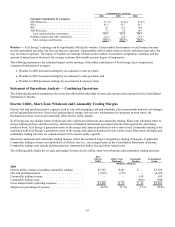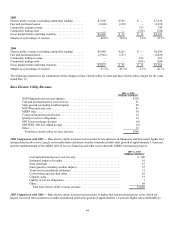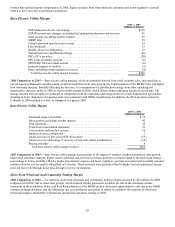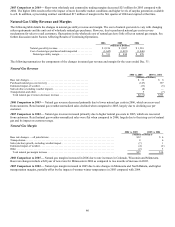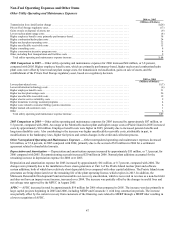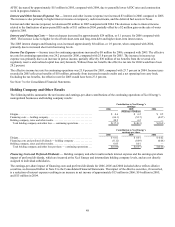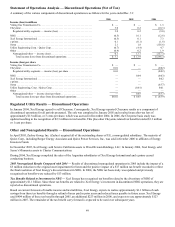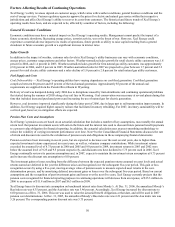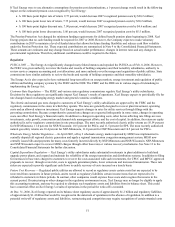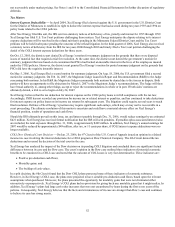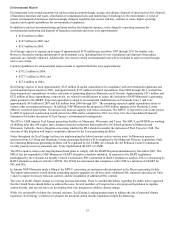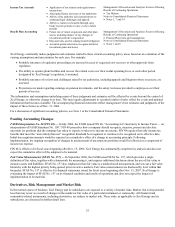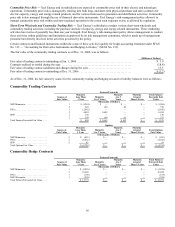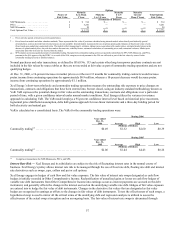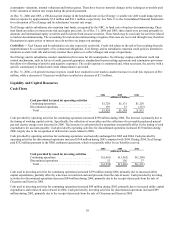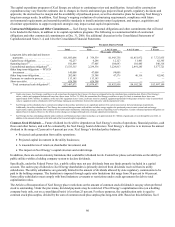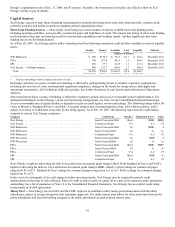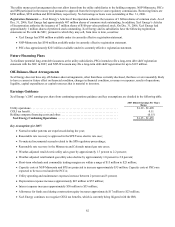Xcel Energy 2006 Annual Report Download - page 63
Download and view the complete annual report
Please find page 63 of the 2006 Xcel Energy annual report below. You can navigate through the pages in the report by either clicking on the pages listed below, or by using the keyword search tool below to find specific information within the annual report.53
Environmental Matters
Environmental costs include payments for nuclear plant decommissioning, storage and ultimate disposal of spent nuclear fuel, disposal
of hazardous materials and waste, remediation of contaminated sites and monitoring of discharges to the environment. A trend of
greater environmental awareness and increasingly stringent regulation has caused, and may continue to cause, higher operating
expenses and capital expenditures for environmental compliance.
In addition to nuclear decommissioning and spent nuclear fuel disposal expenses, costs charged to operating expenses for
environmental monitoring and disposal of hazardous materials and waste were approximately:
• $152 million in 2006;
• $147 million in 2005; and
• $133 million in 2004.
Xcel Energy expects to expense an average of approximately $176 million per year from 2007 through 2011 for similar costs.
However, the precise timing and amount of environmental costs, including those for site remediation and disposal of hazardous
materials, are currently unknown. Additionally, the extent to which environmental costs will be included in and recovered through
rates is not certain.
Capital expenditures for environmental improvements at regulated facilities were approximately:
• $571.2 million in 2006;
• $327.7 million in 2005; and
• $57.6 million in 2004.
Xcel Energy expects to incur approximately $323 million in capital expenditures for compliance with environmental regulations and
environmental improvements in 2007, and approximately $575 million of related expenditures from 2008 through 2011. Included in
these amounts are expenditures to reduce emissions of generating plants in Minnesota and Colorado. Approximately $213 million and
$232 million of these expenditures, respectively, are related to modifications to reduce the emissions of NSP-Minnesota’s generating
plants pursuant to the MERP. Expected expenditures related to environmental modifications on Comanche Units 1 and 2 are
approximately $41 million in 2007 and $26 million from 2008 through 2011. The remaining expected capital expenditures relate to
various other environmental projects. In addition, NSP-Minnesota has proposed a $905 million upgrade at the Sherburne County
(Sherco) coal-fired power plant. The project will increase capacity and reduce emissions. The MPUC is expected to rule on the project
in 2008. If approved, construction would start in late 2008 and be completed in 2012. See Note 14 to the Consolidated Financial
Statements for further discussion of Xcel Energy’s environmental contingencies.
The EPA’s CAIR impacts Xcel Energy generating facilities in Minnesota, Wisconsin, and Texas. The MPCA and WDNR are working
on drafting rules that will require more stringent emission reductions than required by the federal program in Minnesota and
Wisconsin. Currently, there is litigation concerning whether the EPA should reconsider the inclusion of West Texas in CAIR. The
outcome of this litigation will impact compliance options for the Texas generating facilities.
States throughout the Xcel Energy territory are implementing the federal mercury rule in various ways. In Minnesota mercury
emissions from A.S. King and Sherburne County generating facilities will be regulated by the Minnesota Mercury Legislation, while
the remaining Minnesota generating facilities will be regulated by the CAMR. In Colorado the Air Pollution Control Commission
recently passed a mercury emissions rule. Texas implemented the EPA’s CAMR.
The EPA requires states to develop implementation plans to comply with the BART/Regional amendments by December 2007. The
MPCA has not responded to NSP-Minnesota’s BART alternatives analysis submittal. In response to the BART regulations
promulgated by the Colorado Air Quality Control Commission, PSCo submitted its BART alternatives analysis. PSCo is discussing its
BART alternatives analysis with the CAPCD. The TCEQ has determined that compliance with CAIR is a substitute for BART for
NOx and SO2.
In January NSP-Minnesota made a filing to the MPUC concerning an emissions reduction project at the Sherco generating facility.
The improvement project would include generating capacity upgrades for all three units; additional SO2 emission reductions on Units
1 and 2 to improve mercury emission controls; and the installation of additional NOx controls.
The issue of global climate change is receiving increased attention. There is considerable debate regarding the public policy approach
that the United States should follow to address the issue. Several members of Congress have also proposed legislation to regulate
carbon dioxide, and several states are developing their own programs to address climate change.
While it is not possible to know the eventual outcome, Xcel Energy is taking prudent steps to address the risk of potential climate
regulation. Xcel Energy’s initiatives to prepare for potential carbon dioxide regulation include the following:


